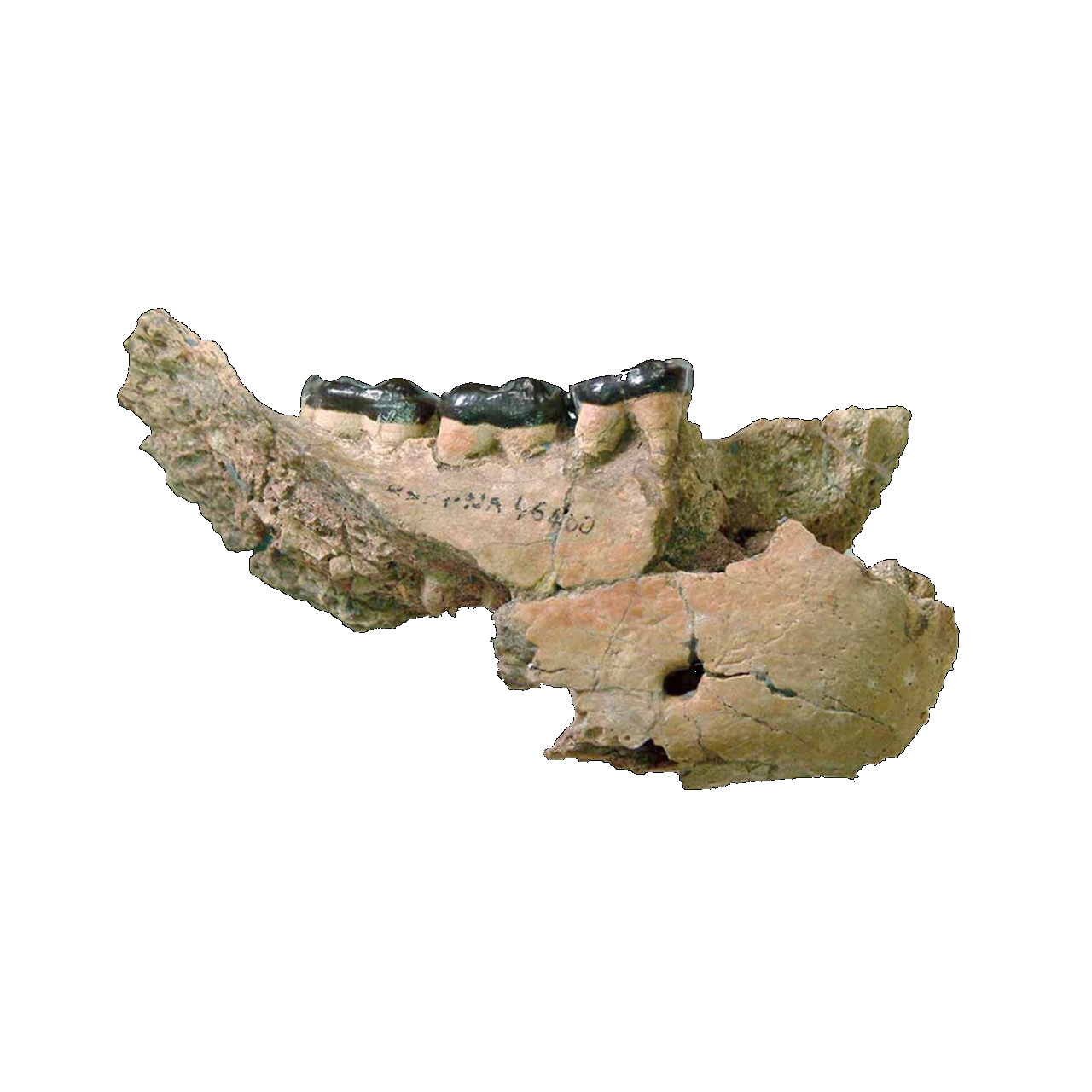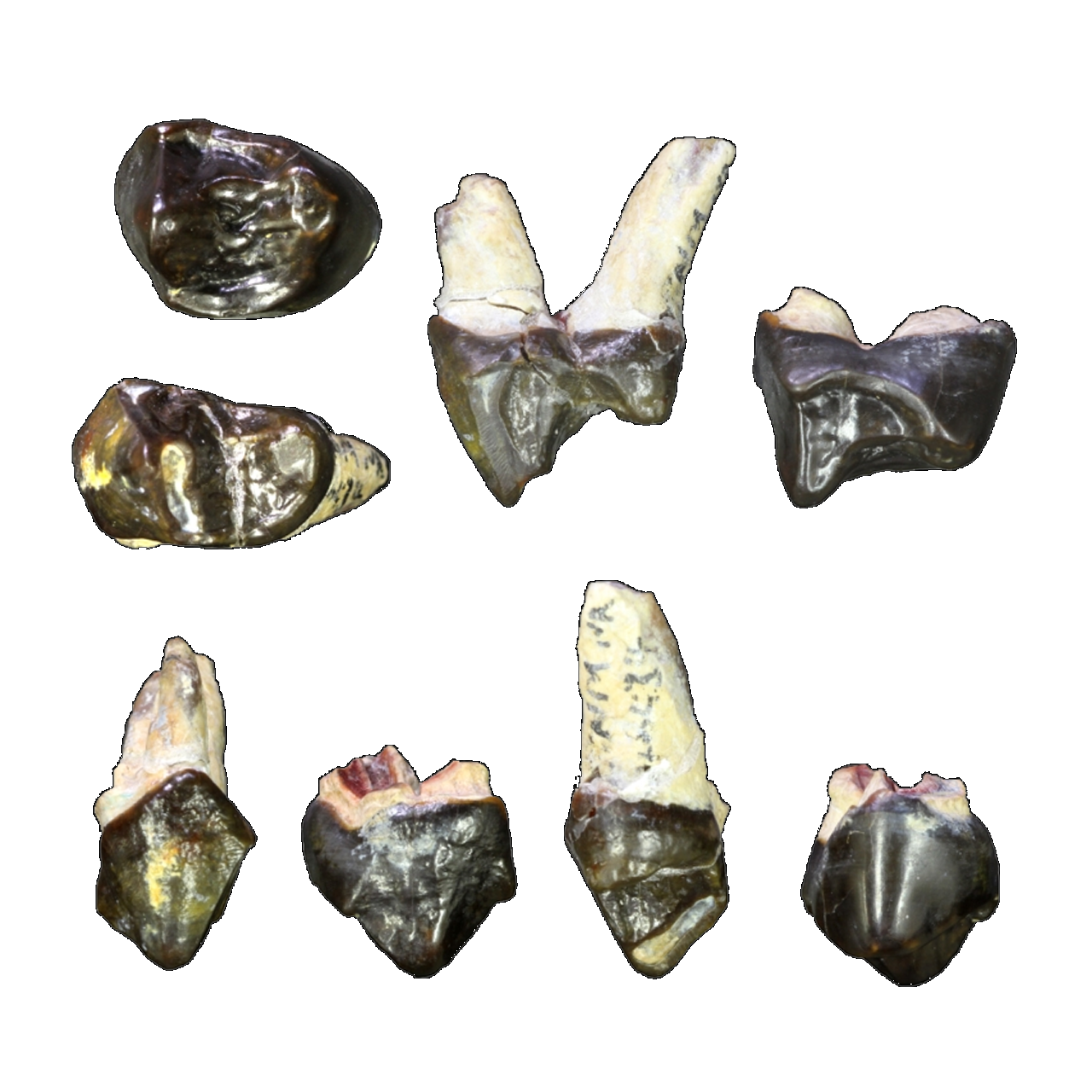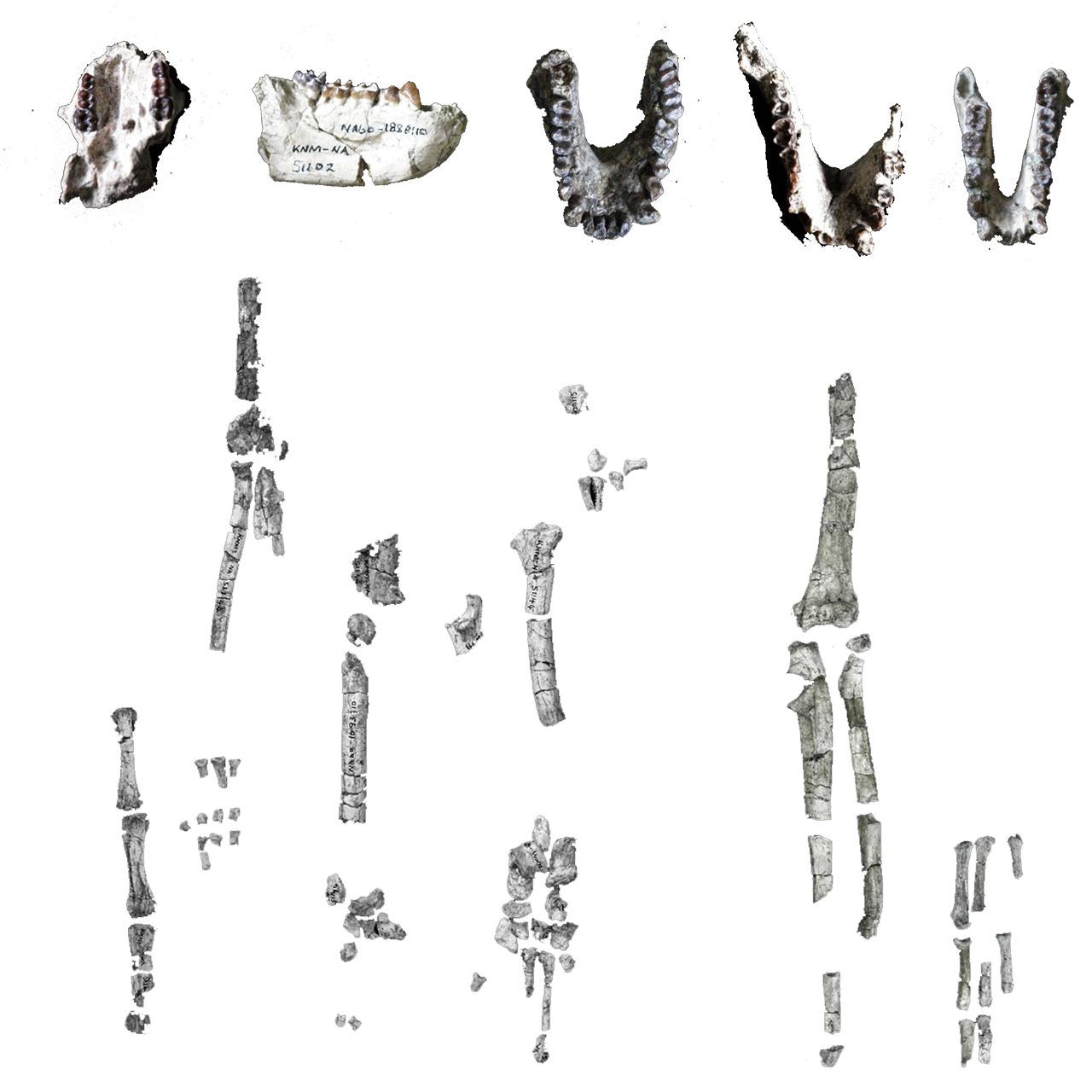Molecular data suggest that the lineages of gorillas and chimpanzees has successively split from that of humans in the period from 12 to 6 million years ago (Late Miocene). However, fossils of African great apes from this time span are extremely scant. Nakali is one of the three African sites where late Miocene ape has been discovered. Our continued research in Nakali offers an important time window to the past to understand primate evolution in the Late Miocene of Africa and its environmental context.
Over the last 15 years, our fieldwork recovered >4000 fossil specimens from the Nakali Formation (9.8 – 10.0 Ma: million years ago). Fossil localities filling the gap between 12 and 6 Ma are few in Africa. The Nakali fossil assemblage is predominant in size and taxonomic diversity among localities of this time span. It includes many new species as well as the earliest or latest members of various mammalian lineages helping clarification of mammalian phylogeny, temporal distribution and paleobiogeography. Along with fossil collection, dedicated geologic survey completed geological mapping of the Nakali and Lotita areas.
Nakalipithecus is one of the three great apes that have been discovered from the Miocene of Africa: others are Samburupithecus (9.6 Ma) and Chororapithecus (8 Ma). We think Nakalipithecus is currently the best taxon to infer the anatomy of the last common ancestor of the African apes and humans and try to find more fossils of this ape, especially of postcranial skeleton.
Intriguingly, Nakalipithecus displays dental similarity to the slightly younger Ouranopithecus macedoniensis known from various Greek localities (9.6~8.7 Ma). We proposed that both of them had a recent common ancestor in Africa. The face of O. macedoniensis exhibits affinity with living African apes and we hope that a discovery of Nakalipithecus face tests this proposition in future.
Figure: Right upper canine of Nakalipithecus (left) and Ouranopithecus (right)
We have recovered a few dental fossils of large ape that are undoubtedly different from Nakalipithecus. Though yet unnamed, these fossils evidence that multiple large ape species inhabited in the Late Miocene of Nakali and suggest that the diversity of African large apes had been sustained by c. 10 Ma.
Figure: Right Upper P3s of Nakalipithecus and “second ape” from Nakali.
Among the Nakali primate fauna, Microcolobus (Colobinae) is most abundant. Several partial skeletons and jaws as well as >200 isolated specimens have been recovered. Microcolobus was a small-sized colobine (small as the low range of living colobines). It was arboreal like most living colobines, but less folivorous and retained well-developed thumb unlike living colobines. Its primitiveness may have bearing on the hypothesis of ape-cercopithecoids ecological competition.
As inferred from the high diversity of primates, closed environments must have shared a large portion of the paleoenvironment of Nakali. This is supported from stable carbon isotope ratios of fossil tooth enamel in herbivorous mammals. The isotope ratios show that they used pure C3 habitat. This makes a stalk contrast with the penecontemporaneous Namurungule Formation (9.6 Ma) in Samburu Hills, which is only 50 km distant from Nakali.
More detail in Uno et al. 2011




